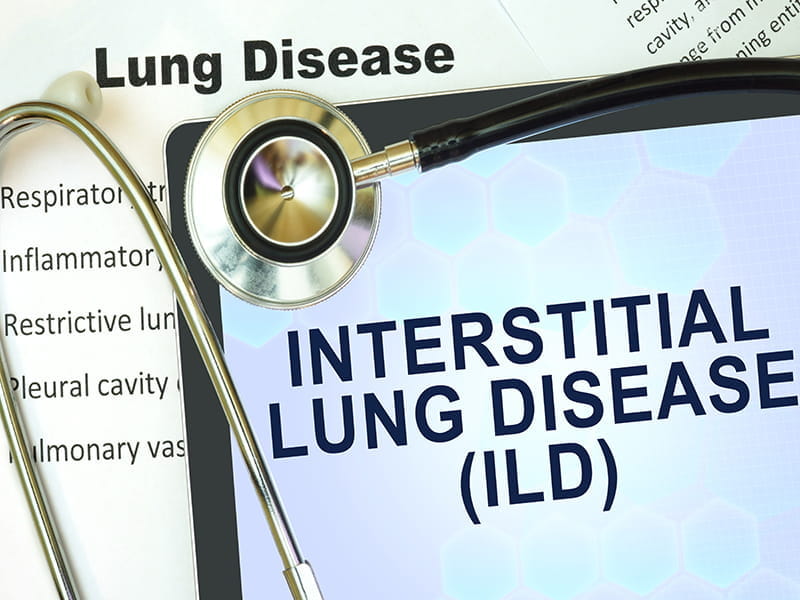Introduction
Despite achieving targets for low-density lipoprotein (LDL) cholesterol, blood pressure, and glycemia in accordance with current standards of care, patients with dyslipidemia remain at high residual risk of vascular events. Atherogenic dyslipidemia, characterized by elevated triglycerides and low levels of high density lipoprotein (HDL) cholesterol, often with elevated apolipoprotein B and non-HDL cholesterol, is common in patients with established cardiovascular disease (CVD), type 2 diabetes mellitus, or metabolic syndrome and contributes to both macrovascular and microvascular residual risk.
This 'residual risk' therefore needs to be effectively and safely addressed. Dr Michael Miller, a renowned cardiologist and lipidologist, was invited by Cipla to throw light on effective strategies to manage the 'residual risk' at the PROMISE meet held at Chandigarh, Pune and Bangalore in April, 2009. This is a compilation of the queries that were addressed during this meet.
Since Dyslipidemia is Common in Diabetics, can Statin-Fibrate Combination Therapy be Initiated Without Screening the Lipid Profile?
It is not advisable to initiate statin-fibrate combination without screening the lipid profile in diabetics. Screening is important because it will help to determine the best therapy as well as the frequency of patient visits. Also, achieving glycosylated hemoglobin (HbA 1C) < 7% helps to normalize triglycerides. The need for fenofibrate can be assessed after achieving normal HbA 1C levels. Further, many patients with diabetes may have fatty liver; in these patients, it is safer to start with low-dose statin therapy rather than directly initiating combination therapy.
How Long can One Use Combination Therapy in Patients with Metabolic Syndrome?
The appreciable effect of lipid-lowering drugs is observed as long as the patient takes the drugs and a rebound effect is observed on discontinuation of these drugs. A recent article on continuous use of fenofibrate for 15 years has shown sustained benefits with no cases of myopathy, which demonstrates an excellent long-term safety profile of fenofibrate. However, it is important to understand that in patients with metabolic syndrome, lifestyle modifications assume utmost importance. With regular exercise and diet modifications, one may be able to reduce the dose of the drugs or even stop therapy in these patients.
What is Your Estimate of the Percentage of Patients Who Need Combination Lipid Lowering Therapy in Addition to Lifestyle Modification?
More than 50% patients need combination therapy in addition to lifestyle modification.
What Should be the Dose of Atorvastatin and Fenofibrate When Used in Combination?
The most widely used dose in India is 10 mg of atorvastatin and 160 mg or 145 mg of fenofibrate, depending on the formulation. One can initiate with 10 mg of atorvastatin and 160 mg or 145 mg of fenofibrate. In those patients who are unable to attain LDL goals, you can consider increasing the dose of atorvastatin. There are no benefits with increasing the dose of fenofibrate beyond 160 mg.
What Should be the Lipid Lowering Therapy in Patients with High Cholesterol and High Triglycerides?
In patients with high cholesterol and triglycerides ≥ 400 mg/dl, statin-fenofibrate combination would be the preferred choice. In patients with high cholesterol and triglycerides between 200-250 mg/dl, niacin or fibrate could be considered in combination with a statin.
Are there any Limitations with Long-Term Use of Combination Therapy?
Although we have patients on combination therapy for several years, currently we do not have data on benefits on cardiovascular outcomes with the combination as compared to monotherapies. This is being assessed by the ongoing clinical trials with combination therapy.
Is there any Role of Statin-Fibrate Combination in Modulating Progression of Microvascular Disease?
Although there is promising data with individual drugs, it needs to be proven whether the combination would be better than individual monotherapies.
What is the Importance of Postprandial Triglycerides in Risk Assessment?
Studies have shown that postprandial triglyceride levels may be a better predictor of cardiovascular risk as compared to fasting triglycerides. However, in clinical practice, routine estimation of postprandial triglycerides is difficult because it is expensive and time-consuming. It is generally observed that triglycerides levels increase by around 50% in the postprandial state as compared to fasting levels. The key point is that lower the fasting triglycerides, lower would be postprandial triglyceride levels. Hence, in our practice, we try to maintain fasting triglycerides below 100 mg/dl, which correlates to a postprandial level below 150 mg/dl.
How Should One Manage a Diabetic Patient with Triglycerides Greater Than 1500 mg/dl?
One should emphasize on lifestyle modifications and identify the causes of hypertriglyceridemia (e.g. Alcohol, estrogen therapy, oral contraceptives) and monitor these patients closely. Further, glycemic control is of utmost importance as it helps to reduce triglycerides. Lowering the BMI also helps to lower triglycerides.
Is Lipid Lowering Therapy Indicated in Diabetics with Normal Lipids?
Studies have shown that statins reduce cardiovascular events in diabetics irrespective of LDL levels. Therefore, statins would be the first line therapy in all diabetics regardless of LDL levels.
In Patients with Only Hypertriglyceridemia and No Other Risk Factors, At What Level of Triglycerides Would You Start Using Fibrates?
The recommendations for using fibrates is in patients with triglycerides above 500 mg/dl.
Does Increasing HDL Increase the Risk of Cardiovascular Events as Shown in Clinical Trials with Torcetrapib?
Increase in cardiovascular events with torcetrapib was not due to CETP inhibition but due to the adverse effects of the drug. Results showed that torcetrapib was an inducer of the renin-angiotensin-aldosterone system, as a result of which aldosterone levels increased and electrolyte imbalances were observed. This may have contributed to the adverse events seen with torcetrapib.
Is there any Target Goal for HDL?
In our practice, we aim for HDL > 50 mg/dl in women and > 40 mg/dl in men. Studies have not proven that raising HDL beyond lowering LDL confers clinical benefits. Studies on the newer CETP inhibitors are awaited.
Does Fenofibrate Reduce HDL?
As a matter of fact, when one reduces triglycerides, HDL levels increase. Fibrates generally increase HDL by 5-15%; some trials have reported even greater increases.
Why is there So Much Focus on LDL Lowering and Not Triglyceride Lowering?
The pharmaceutical industry plays an important role in this. Since a lot of companies are involved in statins, there are much more clinical trials on statins, as well as recommendations and guidelines on lowering LDL. In the bargain, triglycerides have remained as orphans.
How Long Should One Continue with 80 Mg Atorvastatin in Patients with Acute Coronary Syndrome After Their Lipid Levels are Normalized?
In clinical trials, high dose atorvastatin has been used mainly in the acute periinfarction period. The Kaplan-Meier curves start diverging as early as 2-3 weeks after initiation of therapy. Although the maximum duration of therapy with 80 mg atorvastatin is not clear, generally in clinical practice, high dose statin therapy is used for 6 months to 1 year, following which, patients are switched over to a lower maintenance dose. The rationale for using high dose statins in acute coronary syndrome is not only for aggressive LDL lowering but also for reducing non-traditional risk factors such as C-reactive protein (CRP).
Should Statins be Used for Reducing Cardiovascular Mortality in Patients with Chronic Kidney Disease?
Ischemic events are probably not the major cause of cardiovascular mortality in patients with chronic kidney disease. In these patients, the major factors contributing to mortality are anemia and LV dysfunction. Statins have not been shown to have a positive effect on both these parameters. Probably, due to this, statins have not been proven to reduce cardiovascular mortality in patients with chronic kidney disease. However, one should use statins for the management of dyslipidemia in patients with chronic kidney disease.
Do Statins Reduce Albuminuria in Diabetic Nephropathy?
Normalizing lipid profile with statins helps to reduce proteinuria. Studies have shown that statins yield a modest reduction (about 20%) in albuminuria. However, one should not substitute statins for angiotensin receptor antagonists in these patients for reducing albuminuria.
Can One Use Statins in Children Below 15 Years with Dyslipidemia?
One can use statins in peripubertal children with dyslipidemia. However, in pre-pubertal children, stains should not be used except in cases of familial hypercholesterolemia.
How Should One Manage Patients Who Develop Myalgia with High Dose Statins or are Intolerant to Statins?
Myalgia is generally a dose-related effect of statin therapy. In such patients, one can either lower the dose of statin or reduce the dosing frequency of statin. Statins such as atorvastatin have a long half-life. Therefore, in statin-intolerant patients, we use alternate day dosing. If patients are unable to tolerate even this regimen, we use statins twice a week, say, Monday and Thursday. The other alternative would be ezetimibe or bile acid sequestrants in these patients.
Should Coenzyme Q be Added to Statin Therapy?
It is thought that statins in addition to reducing cholesterol also reduce coenzyme Q (intermediary in the cholesterol biosynthetic pathway) which may be responsible for myopathy. However, studies have not conclusively shown that supplementation with coenzyme Q10 reduces the risk of myopathy in statin recipients. We have used 200 mg tri-coenzyme Q and observed that its effects are probably similar to placebo. Therefore, there is no evidence to currently support the use of coenzyme Q in patients receiving statins.
How Low Should the Lipid Levels Be? Are there any Complications of Very Low Lipid Levels?
Although it was thought that very low LDL can increase the risk of non- cardiovascular events such as cancer, this has not been shown in any clinical trials with statins. Analyses of studies have shown that lowering LDL levels even below 40 mg/dl confers some benefit without an increase in adverse events. I would like to get the lipid levels of my patients to physiological levels i.e LDL in the range of 40-70 mg/dl and triglycerides in the range of 50-100 mg/dl. Certain populations in the world who have their lipid levels at these physiological levels have exhibited greater longevity and lesser risk of developing coronary disease.
Can One Use Lipid Lowering Therapy in Patients with Elevated Liver Enzymes?
One should assess the benefit: risk ratio in these patients. Patients have increased liver enzymes often due to fatty liver. One should use the baseline ALT as the starting point and put them on a low dose statin.
Some Articles Mention that Increase in Liver Enzymes with Statins is Not a Toxic Effect, But is Actually a Hepatic Reaction to These Drugs.
This is true because one should expect a small increase (about 1.2-1.3 fold) in ALT levels as compared to baseline with statin therapy. Statins can be used as long as the increase in ALT levels is less than 3 times as compared to baseline.
Is Erectile Dysfunction a Side Effect of Statins?
Erectile dysfunction is not a side effect of statins, but having hypercholesterolemia can induce erectile dysfunction.
Are there any Benefits in Adding Antioxidants to High-Dose Statins for Preventing Cardiovascular Events?
Antioxidants have not been shown to prevent cardiovascular events and therefore, there would be no benefits with addition of antioxidants to high-dose statins.
How can One Manage Flushing in Patients on Niacin?
Non-enteric coated aspirin in a dose of 325 mg should be used to reduce flushing in patients on niacin. Importantly, patients should be instructed to avoid taking niacin on an empty stomach to prevent flushing.
How Would You Treat Dyslipidemia in Patients with Cholelithiasis?
It is important to assess the benefit: risk ratio of lipid lowering drugs in these patients. One needs to be very cautious with using fibrates in these patients since they increase the lithogenicity of bile.
Is it Advisable to Monitor CPK Levels in Patients on Statin Therapy?
Routine monitoring of CPK levels is not needed.
Are Omega - 3 Fatty Acids Useful for LDL Reduction?
Omega-3 fatty acids do not lower LDL cholesterol.
Are there any Lipid Lowering Effects of Metformin?
Although metformin reduces triglycerides, this reduction is significantly lesser as compared to fenofibrate.
Do any Lipid Lowering Drugs Cause Hypoglycemia?
None of the lipid lowering drugs causes hypoglycemia. Niacin, on the other hand, promotes hyperglycemia.
What is the Place in Therapy of Ezetimibe?
Presently, ezetimibe remains a second-line therapy. The IMPROVE-IT trial, which is evaluating the benefits on cardiovascular events with statin-ezetimibe combination vs. statin monotherapy in patients with acute coronary syndrome, is awaited.
Can we Use the Combination of Statin, Fibrate and Ezetimibe?
This combination can be used in patients with resistant dyslipidemia.
How do we Manage Patients with Elevated Lp (A) Levels?
Niacin has traditionally been viewed as perhaps the best lipid lowering agent which lowers Lp (a). Results from clinical trials suggest that lowering LDL in patients with high Lp (a) can offset some of the excess risk associated with high Lp (a). In our practice, we often try a combination of statin and niacin in patients with high Lp(a).
Is there any Role of Oxidative Stress in Dyslipidemia?
Oxidative stress may promote atherogenesis but has no role in dyslipidemia.
Is there any Change in Platelet Count with Lipid Lowering Drugs?
There may be a slight change in platelets with lipid lowering drugs, which may not be clinically relevant.
Is there a Role of Lipid Lowering Therapy in Children and Adolescents Especially in Type I Diabetes?
Patients with type I diabetes do not tend to manifest the type of dyslipidemia that we often see in patients with insulin resistance. In type I diabetics, HDL as well as triglycerides are generally normal. Currently, we reserve statins for Type 1 diabetic patients with familial hypercholesterolemia or family history of CVD or high risk of CVD.
Should apo B be Routinely Measured in Clinical Practice?
We measure apo B only for research purposes. In most places, apo B measurements are not standardized. In our clinical practice, we try to lower LDL below 100 mg/dl and triglycerides below 100 mg/dl. If both these goals are achieved, it is not necessary to evaluate any other lipid measures.
Should we Measure CRP Levels While Treating Dyslipidemia and CHD?
CRP is a biomarker or risk, rather than a risk factor per se. In my opinion, the chances of a high CRP in the absence of any other risk factor, is practically nil.
What is the Most Sensitive Lipid Parameter for Assessing Risk of CAD?
One should aim for LDL < 100 mg/dl, triglycerides < 100 mg/dl, blood glucose < 100 mg/dl and systolic blood pressure near 100 mm Hg for minimizing risk.










